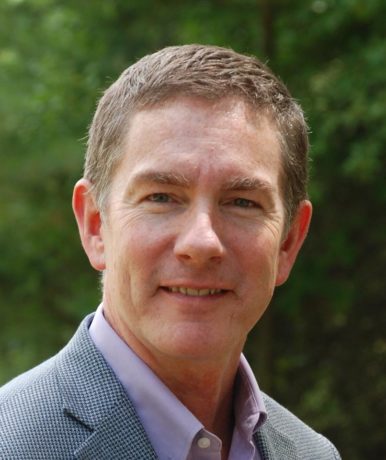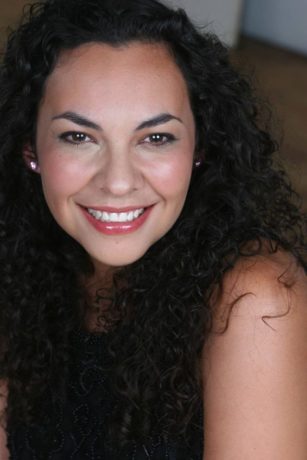Close your eyes for just a moment. Imagine that you are comfortably seated in an elegant, yet commodious room, filled with people who have come to share—no, not the latest election scuttlebutt; but something that will be, arguably, equally absorbing, as well as (no argument here) exceptionally more elucidating and congenial.You have in fact entered, in mind and mood, a 19th-century salon, primed for a concert of poetry and song, the work of two unquestioned giants of the Romantic era: Robert Schumann and Heinrich Heine.
Earnestly, and passionately performed by three noted and talented musicians, the program offered Schumann’s Dichterliebe Op. 48, set to 16 of the 65 poems of Heine’s Lyrisches Intermezzo; three selections from Myrthen Op. 25; and three duets.The musical sections, performed by tenor Bryan Jones, mezzo Elizabeth Mondragon, and pianist (and In Series founder) Carla Hübner, were followed by “Salons,” enjoyable and enlightening discussions among the three performers, host Frank Conlon, and visual artist Jonathan Dahm Robertson, followed by Q&As with the audience.

Conlon set the stage—as did, more literally, Resident Stage Manager Cindy King and Lighting Designer Stefan Johnson—with learned and engaging mini-biographies of Schumann, Heine, and Hübner and a précis of the song cycle we were about to hear. Addressing us with warmth and wit, he skillfully encapsulated Romantic period music as being variously (yet justifiably) seen to represent the immense, or—as well as?—the minute.
Jones’s light tenor voice showed to best effect in several songs. “Das ist ein Flöten und Geigen” (“There’s fluting and violin-playing,” #9) had a nice overall flow, and portions were delivered with a pleasingly jaunty bounce. In “Ein Jüngling liebt ein Mädchen” (“A youth loved a maiden,” #11), Jones conveyed the boy’s perplexity with amiable humor, his “storytelling mode” effectively involving the audience in the tale. “Am leuchtenden Sommermorgen” (“On a radiant summer morning,” #12) was nuanced, beginning with a sympathetic, gentle sadness, ending with the hint of a harder-edged questioning.
Mondragon’s three solo selections, all from Op. 25, displayed a rich, gleaming voice capable of hushed, fully supported pianissimos, and an ease of production complemented by a command, overall, of the language’s often challenging (for non-native speakers) vowel and consonant sounds.
In the ever-popular “Widmung” (“Dedication,” #1), the voice had an almost spinto sound; in “Du bist wie eine Blume” (“Thou art so like a flower,” #24), the dynamics were supple, shifting from a delicate softness and a precise, yet limpid “t” at the end of a word, to a clear, dramatic assertion. “Der Nussbaum” (“The Walnut Tree,” #3), another favorite, was sung in a natural, conversational, winning style, as if the shy tree trusted us, and was telling its own tale of young lovers to us.

The last musical numbers, the duets, were particularly satisfying, drawing out the best from both performers. Here, Hübner, whose technical agility and innate musicality were evident throughout as she accompanied the singers on a Steinway black upright, matched the singers in an almost literal—i.e., musical—harmonic convergence.
“So wahr die Sonne scheinet” (“As truly as the sun shines,” Op. 37 #12) was like a sweet bonbon, the three musicians contentedly sensing and complementing each other. “In der Nacht” (“At night,” Op. 74 #4) flowed gracefully, with a quiet glory, the voices and piano in perfect accord, both tonally and emotionally.
In the last number, “Er und sie” (“He and she,” Op. 78 #2) Mondragan’s soprano was at turns rich, dark and yearning, delicate and noble, drawing at least one listener (this one) nearly to tears, while Jones’s tenor blended with a beautiful evenness and classic simplicity, punctuated by a piercing intensity.
The Salon sections of the show, like the salons of old, were stimulating, illuminating and down-to-earth friendly, the artists inviting and welcoming the audience into the conversation. Conlon told us of Schumann’s “Davidsbündlertänze” (“Dances of the League of David”), a celebration of true-blue Romantic composers and a castigation of empty-headed pretenders—“Florestan” supposedly composed some of the songs, and “Eusebius” the others—and merrily deconstructed a few of the songs for us.
Picking up the theme, Hübner adroitly deconstructed Romanticism itself, describing it as an attempt to understand the human soul that goes to the core of human duality, while Jones drew parallels between Schumann’s music and the oeuvre of “the ultimate Romantic,” landscape painter Caspar David Friedrich, and its focus on the duality of man’s resilience in the face of natural adversity and nature’s own ability to recover from natural and man-made disaster. That duality was present even in the screen shots that accompanied the program, noted visual artist Jonathan Dahm Robertson, the smoothness and angularity of the German “Fraktur” font seductively attractive, yet dangerously sharp.
In fact, the entire production could be said to be characterized, not quite by duality, but by generous and gratifying pairings: of voice and instrument, song and speech, drama and lightheartedness, the philosophical and the quotidian. As the program came to a close, Carla Hübner expressed concern regarding the potential loss of this musical “heritage” in the face of competing cultural norms and the leisure activities they encompass and embrace. In response, a member of the audience assured that Lieder recitals are in no danger of dying out, as the packed halls at DC-area recitals continually demonstrate.
Indeed, the house was virtually full at Source. As there is just one remaining performance—next Saturday afternoon—Lieder lovers, re-enactment fans, music historians and anyone who would enjoy being drawn into a relaxing, yet rewarding place, time and political pace, far away from the fray (and fraying gentility and civilities) of today, should check out the In Series with a (dare I say?) Romantic urgency. It is one vote you probably will regret!
The Romantics III: Schumann & Heine plays through October 29, 2016, at the In series performing at Source – 1835 14th Street, NW, in Washington, DC. For tickets and information, call the box office at (202) 204-7763, or purchase them online.
RATING:





